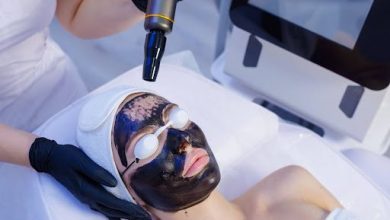Top Crypto Coins 2025: Web3 ai Crosses $4.1M Presale as Sui, Avalanche, Hyperliquid See Strong Moves

As the crypto market changes, many are watching projects that show strong basics and growth. In 2025, some projects have stood out and attracted wide interest. Web3 ai made news by raising over $4.1 million in its presale, showing strong support. At the same time, Sui (SUI) stayed steady after a large token unlock. Avalanche (AVAX) gained from network changes and interest from big institutions. Hyperliquid (HYPE) kept rising in the DeFi space.
This article looks closely at these top crypto coins, reviewing their recent activity and what may lie ahead. It covers Web3 ai’s AI platform, Sui’s market changes, Avalanche’s tech progress, and Hyperliquid’s growth in DeFi. The goal is to give a full view of the top crypto coins to follow in 2025.
Web3 ai’s $4.1M Presale Shows Growing Interest in AI Tools
Web3 ai is quickly becoming a project of interest in crypto. Many traders are drawn to its AI-driven platform. It raised over $500,000 in the first 24 hours of presale and passed $4 million in total funds raised. This shows strong support from the crypto community.
The project offers 12 AI-powered tools to help traders. These include real-time signals, scam warnings, risk control, and portfolio checks. The tools use machine learning, natural language processing, and deep learning to study data from blockchains, exchanges, news, and social media. This helps users get useful tips to guide their trades.
Web3 ai is now in stage 5 of its presale with the $WAI token priced at $0.000365. The final listing price will be $0.005242, which gives early buyers a possible 1,747 percent return. With its AI tools and strong support, Web3 ai is one of the top crypto coins to watch in 2025.
Sui (SUI) Shows Strength After Token Release
Sui (SUI) has shown strong stability after a major token unlock. On May 1, 2025, about 88.43 million tokens were added to the market as part of the planned release. Unlike usual trends, SUI’s price rose to around $4.02, showing good demand and belief in the project.
Chart analysis shows a positive MACD signal and a breakout from a bullish pennant pattern. This points to the chance for more price gains. Experts say SUI could reach $5.21 by mid-May 2025, which would be a 30 percent increase. The project also saw a 12 percent rise in network activity, with 1.2 million transactions and a trading volume jump to $45 million by May 11.
A new partnership with 21Shares looks to help Sui grow further worldwide, especially in the U.S. These changes mark Sui as a strong contender among the top crypto coins in today’s market.
Avalanche (AVAX) Sees Growth With Upgrades and Demand
Avalanche’s AVAX token has risen in value to about $25.58 as of May 10, 2025. This is a 23.8 percent gain over the past week. The jump came after the launch of the Avalanche9000 testnet, which aims to boost network speed and cut costs by up to 99.9 percent.
The platform also shared news of a $250 million fundraising plan to support growth. Large investors are taking notice with a leading asset manager filing to start an AVAX exchange-traded fund (ETF) in the U.S., which could lead to wider use. Experts believe AVAX may rise to $56.83 by the end of 2025 if the DeFi space grows and market conditions stay strong.
Hyperliquid (HYPE) Keeps Climbing in DeFi Market
The HYPE token from Hyperliquid has remained strong and is now at $25.26 with a market value of about $8.35 billion. Since starting in late 2024, HYPE has risen over 1,000 percent and reached $34.96 in December 2024. Even with market changes, the token has stayed solid with open interest reaching $4.9 billion on May 8, 2025.
Market studies suggest HYPE may keep moving up and could reach $25.40 by the end of 2025. Its focus on decentralized perpetual futures trading and having its own blockchain has helped build its place in the DeFi world.
Top Crypto Coins Worth Watching in 2025
The crypto market in 2025 has many projects showing good progress and strong fundamentals. Web3 ai’s successful presale and AI-powered tools make it stand out as a top crypto coin. Sui has stayed strong after its token unlock. Avalanche has seen gains from upgrades and investor interest. Hyperliquid continues to grow in the DeFi market.
These projects offer different features and growth opportunities. For anyone following top crypto coins, these examples give useful insight into what to watch. As always, careful study is needed when looking at choices in the fast-changing crypto space.









